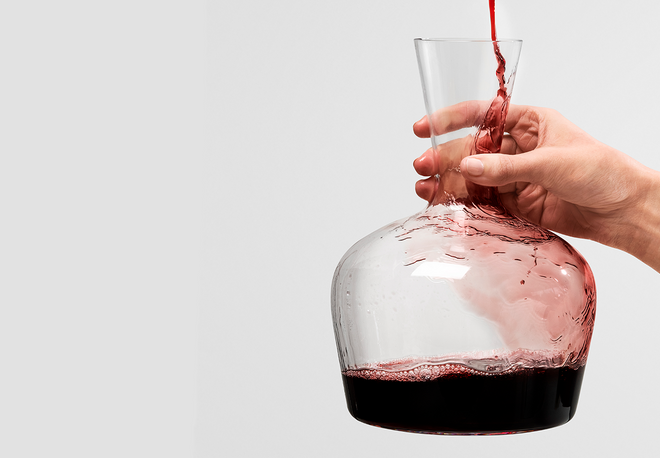
13/07/23
The Art of Decanting: How to Decant Wine | Richard Brendon
The Art of Decanting: How to Decant Wine
Welcome to the world of decanting wine, where the simple act of pouring takes on a transformative power. Prepare to elevate every wine experience, unlocking flavour profiles and enhancing the depths that lie within each bottle. Discover the art of decanting and embrace a new level of appreciation for your wine.

Understanding the Basics: Why Decant Wine?
Traditionally, decanting wine served the purpose of separating sediment, preventing unwanted residue from ending up in your glass. However, it has been observed that young wines tend to benefit the most from this process, as oxygen they contain hasn't had as long an opportunity to take full effect on the wine. Therefore, aerating a young wine in a decanter can create an illusion of greater maturity.
The ideal timeframe for decanting varies depending on the wine's strength, ranging from 2 to 24 hours before serving and savouring. Following the guidelines established by Jancis Robinson, young wines with robust tannins and higher alcohol content can be decanted earlier and are more tolerant to this process compared to older wines with lighter bodies. Additionally, full-bodied white wines like White Burgundies and Rhônes can also benefit from decanting, and their visual appeal in a decanter often enhances their allure, similarly to red wines.

Young Wine Decanter: Form Meets Function
When decanting young wines, it's desirable to have a decanter that facilitates maximum aeration. Our Young Wine Decanter is thoughtfully crafted with an elongated neck, providing ample space to vigorously swirl the wine. This design encourages the oxygen to interact more energetically with the young wine, expediting its evolution and enhancing the process of flavour mellowing. Its spacious bowl even accommodates a magnum, making it the perfect centrepiece for your next dinner party.

Mature Wine Decanter: The Distinct Shape
When it comes to older wines, it is important to use decanters with minimal headspace to minimise exposure to excessive oxygen, which can potentially compromise the wine's aroma and ageing potential. The Mature Wine Decanter, highly regarded by winemakers globally, is specifically designed to cater to this requirement. It is a favoured choice for ensuring that the delicate nuances, length, and aromatic qualities of mature wines remain intact during the decanting process.

Step-by-Step Guide: How to Decant Wine
Begin by preparing the wine and your beloved Young Wine Decanter. With careful techniques tailored to different wine types, you'll master the art of pouring, ensuring a seamless transition from bottle to decanter.
1. Stand the Bottle Upright: Place the wine bottle upright for at least a few hours before decanting. This allows any sediment to settle at the bottom of the bottle.
2. Uncork the Wine: Remove the foil and gently extract the cork from the bottle, taking care not to disturb any sediment that may have accumulated.
3. Slowly Pour the Wine: Position the decanter securely on a flat surface and hold the wine bottle with one hand while tilting it at a slight angle. Begin pouring the wine into the decanter in a slow, controlled manner. The goal is to minimise the transfer of any sediment.
4. Observe the Wine: Pay attention to the wine as you pour. If you notice sediment approaching the neck of the bottle, you may want to stop pouring at that point to avoid transferring it to the decanter.
5. Allow Aeration: For a young wine, follow decanting with a generous swirl and let the wine sit for a while to allow it to aerate. This process exposes the wine to oxygen, enhancing its flavours and aromas.
6. Serve and Enjoy: Once the wine has had sufficient time to aerate, it is ready to be served. Pour into a Jancis Robinson Wine Glass and allow the decanters to work their magic.
















































